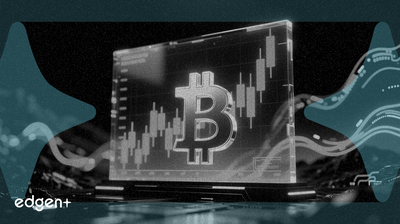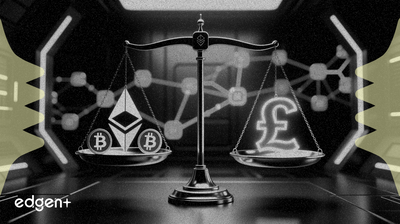Related News

Trader Alessio Rastani Predicts 75% Chance of Bitcoin Rally, Citing Technical Analysis
## Executive Summary Veteran trader Alessio Rastani has issued a new analysis forecasting a 75% probability of a short-term rally for **Bitcoin (BTC)**. The prediction is rooted in technical analysis, citing a confluence of historical chart patterns, oversold market conditions, and sentiment indicators. This perspective suggests that recent price weakness, often interpreted as bearish, may instead be a precursor to a significant upward movement, potentially influencing short-term trading strategies across the cryptocurrency market. ## The Event in Detail Rastani's forecast is primarily based on his interpretation of the "death cross," a technical chart pattern that occurs when a short-term moving average (such as the 50-day) crosses below a long-term moving average (like the 200-day). While traditionally viewed as a bearish signal, Rastani's research posits that, in Bitcoin's history, such events have often been contrarian indicators that preceded notable rallies. He argues that the current market setup mirrors these past instances. Supplementing this core signal, the analysis points to several supporting factors. Technical indicators suggest that Bitcoin is currently in an "oversold" condition, a state that can attract buyers looking for a market reversal. Furthermore, market sentiment indicators are reportedly showing signs of extreme fear, which contrarian investors often view as a buying opportunity. Rastani also references the correlation between the cryptocurrency and traditional stock markets as a factor in his assessment. ## Market Implications The immediate implication of Rastani's widely-publicized analysis is the potential for a shift in trader sentiment. By presenting a data-backed, albeit technical, argument for a bullish reversal, it may encourage long positions and increase buying pressure on **BTC**. This highlights the significant influence that technical analysts and notable traders can have in a market heavily composed of retail participants who rely on chart-based signals. The forecast underscores the ongoing debate between technical and fundamental analysissupporters of the former will see this as a clear signal, while the latter may remain skeptical without corresponding fundamental drivers. ## Expert Commentary Alessio Rastani's public commentary indicates a strong conviction in his analysis. He has stated, "I'm 100% Sure, The Bulls Are Going To Win The Race," framing the current market as entering "the final stage of the current bull market." His analysis consistently focuses on recurring chart patterns and signals, as seen in his video titled, "Bitcoin Just Triggered the Same Signal AGAIN This Year (what it means now)." It is important to note that this perspective is derived from technical chart patterns and does not constitute investment advice. Rastani's disclaimer clarifies that trading involves large potential risks and his educational content should not be construed as a direct recommendation to buy or sell any asset. ## Broader Context This event fits into a larger narrative المالية the growing sophistication of technical analysis within the cryptocurrency space. Indicators padrões like the death cross, once confined to traditional equity and commodity markets, are now routinely applied to digital assets. The increasing correlation between Bitcoin and major stock indices means that macroeconomic factors influencing stocks can also impact crypto, making a holistic view that incorporates both technical and macro analysis more relevant. Rastani's prediction, whether it materializes or not, serves as a case study in the power of technical narratives to shape market behavior and sentiment in the highly speculative and unregulated crypto ecosystem.

UK Proposes 'No Gain, No Loss' Tax Deferral for DeFi Activities
## Executive Summary The United Kingdom's government has released a proposal to implement a "no gain, no loss" tax framework for specific Decentralized Finance (DeFi) transactions. The proposed rules, which target crypto-asset lending and liquidity pool provisions, would defer the capital gains tax (CGT) event until the assets are economically disposed of. This initiative represents a significant potential shift from the current guidance, which often triggers a taxable event upon the transfer of assets into a DeFi protocol. The measure is designed to reduce the administrative complexity and tax burden on users, potentially fostering greater DeFi adoption and solidifying the UK's position as a crypto-friendly jurisdiction. ## The Event in Detail Under the current guidance from **His Majesty's Revenue and Customs (HMRC)**, when a user transfers crypto assets into a DeFi lending or liquidity protocol, it is often treated as a "disposal." This means the user is liable for Capital Gains Tax on any appreciation in the asset's value at the time of the transfer, even if no profit has been realized in fiat currency. This interpretation has been a major point of friction for the UK's crypto industry, creating tax liabilities that do not reflect an investor's actual economic position and imposing a heavy compliance burden. The new proposal seeks to rectify this by treating the transfer of crypto assets into a lending or liquidity pool arrangement as a non-event for tax purposes. A CGT event would only be triggered upon the final "economic disposal" of the assets, such as selling them for fiat currency. This aligns the tax treatment of these DeFi activities with their underlying economic substance, where the user retains a form of ownership or claim on the underlying assets. ## Financial Mechanics of the Proposal The core of the proposal is the deferral of the CGT liability. To illustrate, consider an investor who acquired 1 ETH for £1,000. If they later deposit that ETH into a liquidity pool when its market value is £2,500, current **HMRC** rules could trigger an immediate CGT liability on the £1,500 gain. The investor would have to pay tax on this "phantom" gain, despite not having sold the asset. Under the proposed "no gain, no loss" system, this £1,500 gain would not be taxed at the point of deposit. The tax liability would be deferred until the investor withdraws their assets from the pool and subsequently sells them. This method prevents tax events from occurring during the intermediate steps of DeFi participation, significantly simplifying tax calculations and improving cash flow for investors. ## Market Implications The proposal is widely viewed as a bullish development for the UK's DeFi ecosystem. By lowering the barrier to entry and reducing the tax complexity associated with participating in DeFi, the new rules are expected to encourage greater adoption among both retail and institutional investors. This regulatory clarity could make the UK a more competitive and attractive hub for DeFi projects and developers, who have previously been deterred by the ambiguous and often punitive tax environment. Industry bodies and participants have lauded the proposal as a "major win" that reflects a more nuanced understanding of DeFi from UK policymakers. ## Broader Context and Global Regulatory Trends The UK's proposed approach places it in the context of a global conversation about how to regulate and tax the nascent DeFi sector. In the United States, for instance, the crypto industry has been actively pushing back against broad IRS proposals that could impose significant reporting burdens on DeFi participants. The UK's move signals a proactive effort to create a bespoke regulatory framework that supports innovation while ensuring tax compliance. This could set a precedent for other jurisdictions grappling with how to adapt traditional tax principles to the novel structures of decentralized finance, potentially influencing the direction of global crypto regulation.

Kaspa (KAS) Surges Over 17% While MemeCore (M) Plummets by 31% in Volatile Trading
## Executive Summary In a display of significant market volatility, **Kaspa (KAS)** and **MemeCore (M)**, two tokens within the top 100 cryptocurrencies by market capitalization, demonstrated sharply divergent trajectories. Kaspa experienced a substantial price surge of over 17%, while MemeCore recorded a steep decline of more than 31%. These movements occurred on significant trading volumes, indicating strong investor activity behind both the rally and the sell-off. ## The Event in Detail **Kaspa (KAS)** exhibited strong bullish momentum, with its price climbing between 17.54% and 25% to reach approximately $0.0607. This price increase was supported by a 24-hour trading volume of approximately $119 million. Market analysis suggests the rally is underpinned by positive technical indicators, such as the MACD and AO, signaling a potential breakout despite what is described as a fearful broader market. Conversely, **MemeCore (M)** underwent a severe price correction, falling by over 31% to a price of $1.25. The token registered a 24-hour trading volume of over $42 million. This precipitous drop is particularly notable as it follows a recent period of positive performance, during which the token achieved a record high of $1.97, illustrating the high-risk, high-volatility nature of memecoins. ## Market Implications The dramatic and opposing price actions of KAS and M highlight the fragmented nature of the current altcoin market. M's sharp downturn after reaching a peak serves as a case study in the rapid sentiment shifts that can affect assets in the memecoin category. The capital rotation out of such assets can be as swift as the initial speculative inflow. In contrast, Kaspa's ability to rally against a backdrop of general market fear suggests that investors may be prioritizing projects with perceived stronger fundamentals or unique technological propositions. The reported bullish signals from technical analysis indicate that this move may be driven by more than just speculative fervor, potentially attracting capital from traders looking for assets with positive momentum. ## Broader Context This event underscores a key characteristic of the cryptocurrency market: the performance of individual digital assets can become significantly decoupled from the movements of major cryptocurrencies like Bitcoin and Ethereum. The divergence between a utility-focused project like **Kaspa** and a memecoin like **MemeCore** points to a maturing, albeit still speculative, market where investors are making distinct choices based on asset class and risk appetite. The incident serves as a clear illustration of the inherent risks associated with memecoins, which are highly susceptible to sentiment-driven volatility and rapid price collapses. For Kaspa, its counter-trend rally could signal growing investor confidence, potentially positioning it as a more resilient asset in a market that is otherwise characterized by uncertainty.
